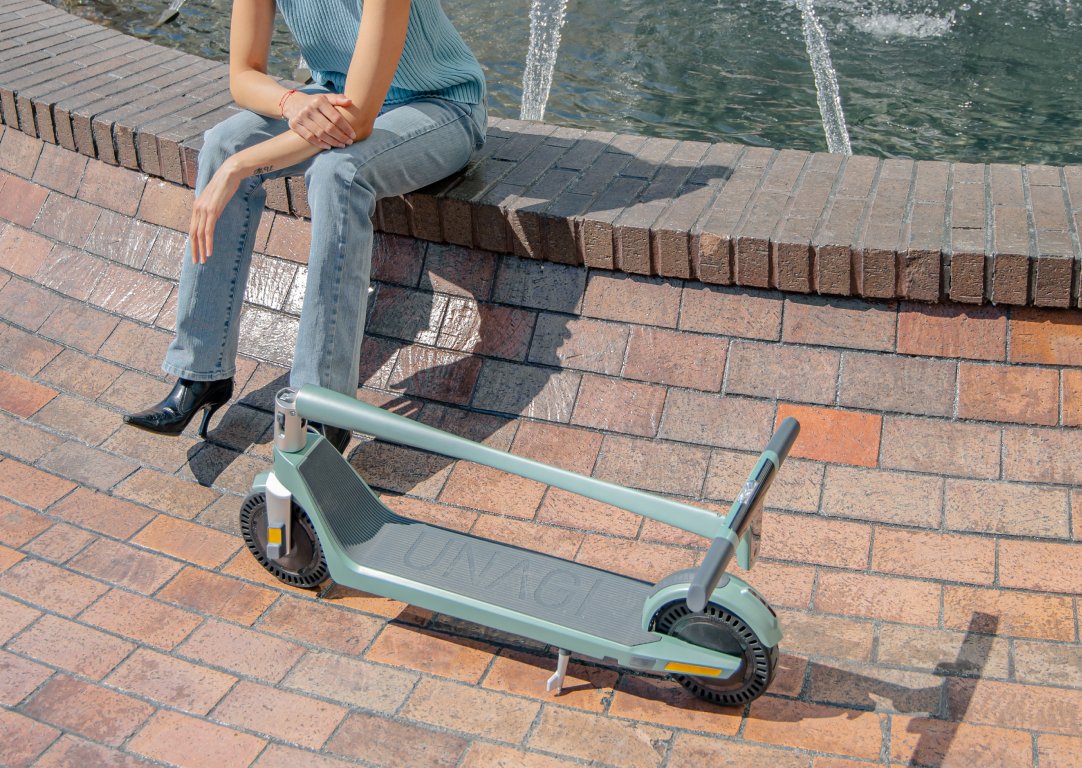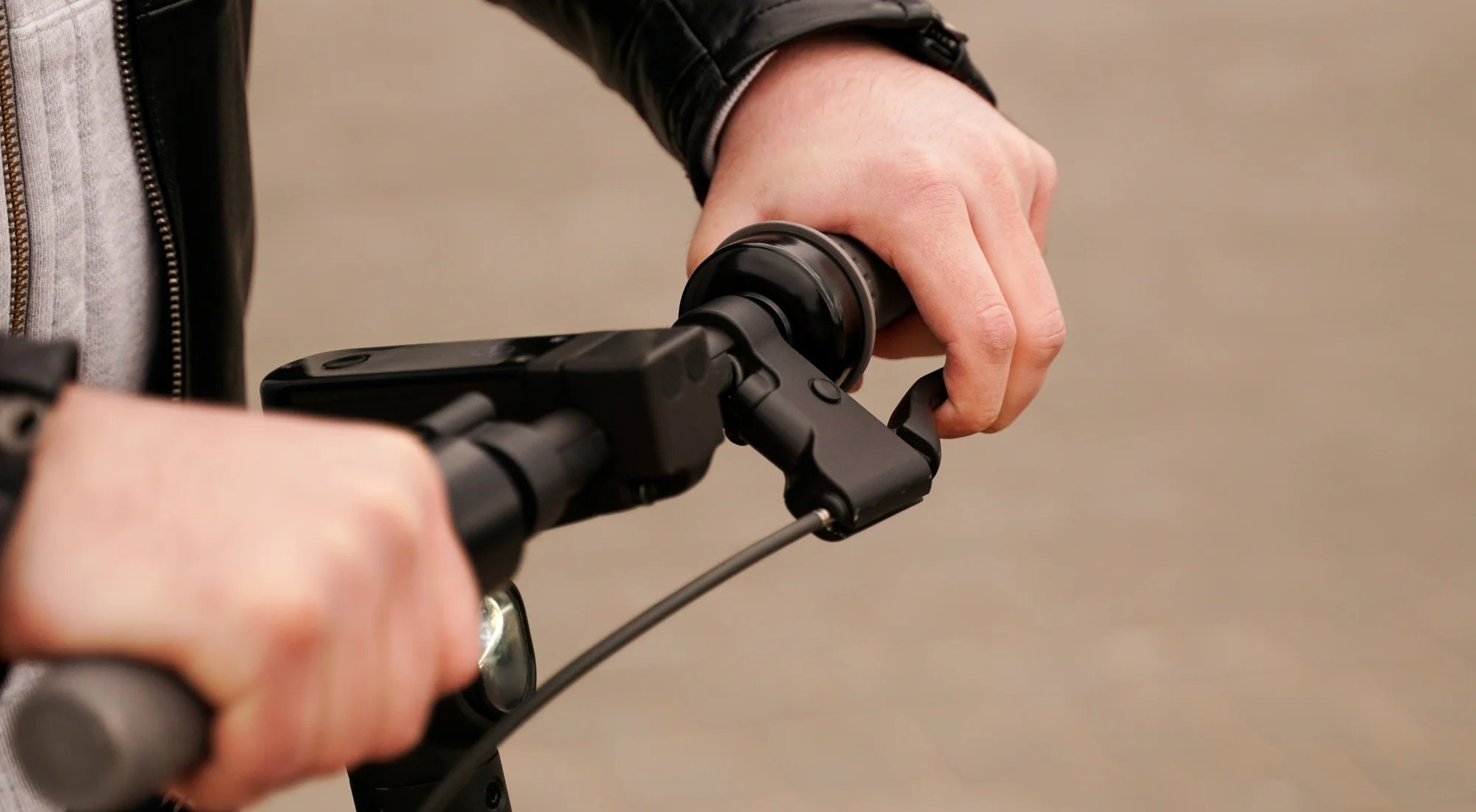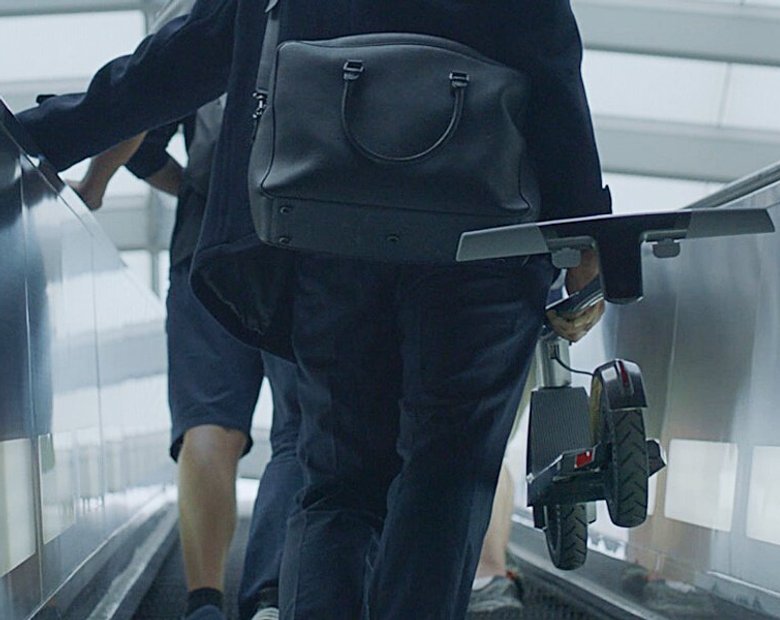Micromobility is here to stay, and it’s changing how we experience urban life for the better. With Unagi’s membership program, you can enjoy all the benefits of a top-tier electric scooter without the sky-high price of ownership or the inconvenience of ride-sharing.
I've been tinkering with electric scooters for a few years now, both out of necessity (they're my main mode of transport), generally my hobby, and out of curiosity. What I've learned is that these machines, while seemingly simple, are actually intricate systems with multiple points of potential failure—especially wiring, sensors, batteries, controllers, and rarely the motor itself. Some issues are obvious, while others are sneaky and hard to spot. The tricky part is figuring out which you're dealing with.
Let's walk through the troubleshooting process step by step, starting with the simplest checks and moving on to more complex issues. By the end of this, you'll either have your electric scooter running again or know exactly what kind of help you need to seek.

Why your electric scooter turns on but doesn't move? Check the basics
Before diving into the scooter's innards, let's rule out some obvious culprits:
Zero-start setting
Many electric scooters have a "zero-start" or "kick-to-start" feature enabled by default. Manufacturers include this as a safety measure to prevent accidental acceleration. This means you need to manually kick off and reach a certain speed before the electric motor engages. Most electric scooters have a settings menu you can access through the display or companion app. Look for a setting called "Zero Start" or something similar, and turn it on if you'd prefer to have the motor engage right away.
Brake sensor
At times, the electric scooter may mistakenly sense that you're pressing the brake, which cuts power to the electric motor. This is a safety feature, but it can malfunction. Check under the brake lever for a small button (this is the brake lever switch). Press it with your finger to release it if it’s stuck, and see if that allows the electric scooter to move again. If this solves the issue, you may need to adjust the brake lever or replace the sensor if it continues to get stuck frequently.
Loose connections
Give your electric scooter a thorough once-over, checking for any visibly disconnected wires or loose components. Pay special attention to the areas where the handlebars connect to the body and along the folding mechanism, as wires can sometimes get pinched or disconnected during folding and unfolding.
Dead battery
Yes, even if the display comes on. Many electric scooters have just enough reserve power to light up the screen, but not enough to drive the motor. Try charging it overnight.
These are the things most people check first, and rightly so. They're common minor issues and relatively easy to spot. But if you've ruled these out and your scooter is still stubbornly stationary, it's time to dig deeper.
Throttle troubles
If the throttle is faulty, your electric scooter will not signal the motor to move.

Loose connections
Check that the throttle is securely plugged into the controller. Wiggle the connection while trying to accelerate--if the electric scooter responds intermittently, you've found your problem.
Hall sensor alignment
Open the throttle assembly and check if the magnet has fallen out of place or shifted. The magnet is usually held in the lever by a press fit and glue, but it can become loose, misaligned, or even fall out. The throttle won't work properly if the magnet is not positioned correctly relative to the Hall sensor. Too close, and the electric scooter may accelerate unexpectedly; too far, and it won’t move at all.
Error codes and display info
Some electric scooter models display power changes or indicate how much power is being drawn when you press on the throttle. If there’s no change in power, the throttle could be defective. As for error codes, an Error 03 code on most electric scooters typically relates to a faulty throttle.

How to check if the throttle is not working?
You can check the throttle’s voltage output if you have a multimeter. Typically, throttle wires are color-coded: red (5V), black (ground), and white or green (signal). To test:
- Attach the red probe to the signal wire (white or green) and the black probe to the black wire (ground).
- With the throttle at rest (no throttle applied), measure the voltage between the white (signal) and black (ground) wires. The voltage should be around 0.85V to 1V.
- As you twist the throttle, the voltage should increase smoothly, reaching about 4V to 4.5V at full throttle. (Note: some throttles might operate within slightly different voltage ranges depending on the model.)
If you don't see the voltage change or the readings are significantly off, it likely indicates a faulty throttle that may need to be replaced.
Why does my electric scooter turn on but not move even with a fully charged battery?
If those quick checks don't solve the problem, the battery is the next suspect:
Charge level
Even if you just charged it, double-check that the electric scooter battery is actually full. Some chargers can fail without obvious signs. If you have a voltmeter, you can check the battery voltage directly. A fully charged lithium-ion battery should read around 42V for a 36V system or 54.6V for a 48V system and 84V for a 72 V system. If it's significantly lower, your battery might be failing. Look for any signs of swelling in the battery pack - this is a serious safety issue and means the battery needs immediate replacement.
Voltage under load
Your electric scooter battery might show a full charge, but under load, the voltage could drop below the controller's minimum threshold. If you have a multimeter, measure the battery voltage while trying to accelerate. A significant voltage drop could indicate a weak scooter battery. This is especially common in older lithium-ion batteries or those that have been subjected to extreme temperatures. A healthy battery should maintain most of its voltage under load.
Battery management system (BMS)
The BMS monitors and regulates the battery's performance. If it detects anomalies—like overcharging, overheating, or voltage irregularities—it can shut down or limit power to the motor. If your battery isn’t charging or discharging properly, shows imbalanced cell voltages, experiences sudden power cuts, has no power output, or appears to overcharge or never reach full charge, the battery management system (BMS) might be at fault.
To check for a BMS issue:
- Measure the battery pack voltage using a multimeter. If the total voltage is significantly lower than expected, it could indicate that the BMS is cutting off power.
- Test individual cell voltages. The BMS should balance the battery cells, meaning each should have a similar voltage. If there’s a large imbalance, the battery management system (BMS) might not be functioning properly.
- Check the voltage across the BMS output terminals. A faulty BMS may not provide a voltage output, even if the power supply is charged. Compare the voltage output to the motor with the scooter battery’s direct voltage to determine if the BMS is causing the power cut.
Additionally, you can try a BMS reset. Some units may enter "sleep mode" or trigger a protective cutoff. To reset, disconnect the battery for 10-15 minutes, then reconnect. If the system works after the factory reset, the issue may have been a temporary trigger.
Cold weather impact
Cold temperatures can significantly affect battery performance. If the battery gets too cold, it might not deliver enough power to move the electric scooter, despite turning it on.
Wiring connections
To inspect the battery, you'll likely need to open the deck. This is also a good opportunity to check the network of wires connecting the scooter's battery, controller, motor, and various sensors. Vibrations from regular use can loosen connectors over time, and a disconnected wire might disrupt the flow of electricity, preventing the motor from receiving power. Corrosion from moisture exposure can also affect connections, especially in humid or rainy environments.
Motor issues
When you twist the throttle, you should hear a faint hum or noise from the motor, even if the electric scooter isn’t moving. If you hear nothing, the motor may not be receiving power, or it may be damaged. Here are things that might be off:
Hall sensor
Since the Hall sensor is responsible for detecting the rotor's position and sending signals to the motor controller, a failure in this sensor disrupts the motor's ability to function correctly. The Hall sensor acts like an electronic "switch" that gets triggered by the magnetic field generated by the motor’s rotor. As the rotor spins, magnets embedded in it pass by the sensor, which then sends signals to the motor controller, allowing it to precisely control the power going to different motor phases at the right time.
If a Hall sensor fails, the motor might still run but may experience issues like rough performance, jerky or stuttering motion, reduced power or torque, poor acceleration, noisy operation, or even failure to start at all.
How to diagnose a bad Hall sensor:
- Hall Sensor Test: You can perform a diagnostic test using a multimeter. Set the multimeter to the DC voltage setting and check the voltage of each Hall sensor wire while manually spinning the wheel. As the rotor turns, the voltage should alternate between a high (supply voltage, for most testing ~5V) and low (0V) reading. This fluctuation occurs because the Hall sensors detect the rotor's magnetic field, which changes as it rotates. If one or more Hall sensors do not alternate, it indicates a fault.
- Error Codes or Warning Lights: If the Hall sensor fails, you may see an error code or a warning light on the electric scooter’s display. The error code can sometimes be specific to the Hall sensor issue.
- A damaged Hall sensor can cause the motor to produce louder-than-normal or unusual sounds, such as grinding or whining.
Replacing the hall sensor can be quite a challenge, especially if you're not familiar with the process. In that case, it's often better to take your scooter to an electric scooter repair shop or consider replacing the entire motor if the repair seems too complicated or costly.
Motor phase wires
Electric scooter motors typically have three phases, which means they use three separate wires (or phases) to deliver power to the motor. If one phase is disconnected or damaged, the motor might "twitch" or vibrate erratically instead of spinning smoothly. The motor might attempt to operate but will struggle due to the imbalance created by the missing phase.
Inspection process, resistance, and continuation test
Inspect the wires going into the motor for damage. You're looking for three wires of equal thickness. If one looks different, disconnected, or shows visible signs of damage, such as fraying or cuts, that's your problem.

If you still can’t identify the problem, you can try a few more tests to reach a conclusion.
Completely disconnect the motor from any power source to avoid electrical shock. Set your multimeter to measure resistance (Ω) to check for continuity and resistance across the motor wires. The resistance values should be low and roughly equal across all pairs (typically between 0.5 and 2 ohms, depending on the motor).
If your multimeter reads close to zero ohms between any two phases, it indicates a short circuit between the phase windings, which means the motor will need repair. If the multimeter shows a very high resistance or "OL" (Over Limit), it means there is an open circuit, indicating a break in the winding or a disconnection, which also requires repair.
You can also set your multimeter to continuity mode (which will beep if there’s a connection). Test each phase wire to the ground wire (or the motor’s body/frame if there’s no dedicated ground). There should be no continuity (no beep) between any phase wire and the ground. If you hear a beep, it indicates a short circuit, meaning the wire may be damaged.
If you don’t have a multimeter, you can try another 'continuity test' by shorting the phase wires. Make sure the motor is disconnected from the battery. If shorting (connecting) the phase wires together makes the motor harder to turn, it indicates that some electrical connection exists through the windings, suggesting good continuity.
Motor windings
In rare cases, the motor's internal windings can burn out. This usually requires replacing the entire motor. Signs of this include a burning smell, visible damage to the motor casing, or the motor being excessively hot after a short period of use.
Bearings
While not an electrical issue, worn-out bearings can cause enough friction to prevent the motor from turning. Disconnect the motor and try spinning it by hand. It should spin freely without any grinding or catching.
Controller issues
The brain of your electric scooter might be fried and can cause all sorts of strange behavior. This is trickier to diagnose without some testing equipment. But here are some signs to look for :
Overheating
Some controllers have built-in temperature sensors to prevent overheating. If the controller gets too hot, it may shut down to protect itself. Let the electric scooter cool down and try again. If this happens frequently, you might need better ventilation for the controller or to reduce the load (like climbing fewer hills). It might also be that the controller heat sensor has failed; it might incorrectly think the controller is too hot and refuse to send power to the motor.
Damaged MOSFETs
These are the power transistors that regulate the voltage and current supplied to the motor, controlling its speed and torque. They can fail due to overheating or power surges. If you're comfortable opening the controller, look for any components that appear burnt or discolored.
Capacitor failure
The large capacitors in the controller can fail over time, especially in hot climates. Look for any that are bulging or leaking.
How to test for a faulty controller
The controller manages the flow of electricity between the battery and the motor. If it’s faulty, it might stop sending power to the motor. Use a multimeter to test for continuity between the controller's motor phase wires (output voltage from the controller to the motor). If there's no continuity, your controller might be fried.
Brakes and safety features
Modern electric scooters have various safety systems that can prevent movement:
Faulty brake sensor
Many electric scooters have brake sensors that cut power to the motor when the brakes are applied. If a brake lever gets stuck or a sensor malfunctions, the electric scooter might think you're constantly braking, disabling the motor. You can also inspect the brake sensor button (usually under the lever) to make sure it isn’t being continuously pressed. You can bypass the sensor temporarily to see if this is the issue.
Speed limiters
Many electric scooters have built-in speed limits. If this system malfunctions, it might prevent the electric scooter from moving at all. Check if there's a way to temporarily disable this feature for testing.
Mechanical issues
While we've focused mostly on electrical problems, don't overlook mechanical issues:
Worn-out motor bearings
If the wheel bearings seize up, the motor won't be able to turn the wheel. Try spinning each wheel by hand to check for any resistance. Noisy or stiff bearings indicate that they may need to be replaced or lubricated.
Stuck brake lever and brake adjustment
A mechanical issue with the brake lever might apply the brakes to the wheel, which won’t stop the motor from running but will prevent free movement of the wheel. Check for any physical obstructions and ensure the lever returns fully when released. Additionally, if the mechanical brakes are too tight, they could be preventing the wheel from turning. Check the brake pads and adjust them if necessary.

Bent parts
A bent axle or misaligned wheel could cause enough friction to prevent wheel rotation and affect overall mobility. Inspect the electric scooter for any signs of physical damage.
Software and firmware glitches
Yes, your electric scooter has software, and like all software, it may have bugs. You can try to fix these issues by following these steps:
- Firmware Updates: Check the manufacturer's website or the electric scooter's app to ensure your scooter’s firmware is up to date. Outdated firmware can contain bugs that affect performance.
- Hard Reset: Some electric scooters can be reset by disconnecting the scooter's battery and reconnecting it after a few minutes.

And if all else fails?
There's always the time-honored tradition of giving it a good whack to see if that helps. (Just kidding—please don't actually do that.) Sometimes, though, the universe does have a sense of humor. Anyway, there are a number of electric scooter repair stations that offer professional assistance, so you won't miss out—they are in a better position to handle these repairs.
However, if you decide to attempt repairs yourself, keep this tip in mind: Before disconnecting or removing any of the scooter's components, always take clear, detailed photographs. These visual records will prove invaluable when it's time to reassemble the electric scooter, ensuring everything goes back in its proper place.

The Unagi Voyager is the best lightweight electric scooter for adults and teenagers. It is the ultraportable sequel to its predecessor, the Unagi Model One Classic.

If you're wondering whether an electric scooter with a seat is right for you, this is a detailed article that would suit your need.

Understand which personal electric vehicle is best, the choice between an electric bike or electric scooter might already be made for you by some critical factors, including portability and storage capacity.

Our selection of the best electric scooters 2024 spans the fastest e-scooters to the most portable ones, the ones designed for city riding and off-road, the best scooters for rain, budget electric scooters for students, and more powerful ones for skilled riders.

In the U.S., most states don't require a license. For those that do, they usually just ask for a regular driver's license or a learner's permit.

Yes, you can bring an electric scooter on a plane, but it needs to have a lithium battery smaller than 100 watt-hours, which most don't.

Manufacturers advise against riding electric scooters in the rain. The main reasons are: water can fry the electronics, make the ride dangerous, and void your warranty.

The Slack Core 920R is currently the fastest electric scooter in 2024 that you can purchase without the need for pre-order.

Stay current with the latest U.S. electric scooter laws in our 2024 guide. Updated annually since our first comprehensive guide, ensuring you have the most recent state and city regulations to ride responsibly”

The basis and the premise of my work is that we either operate out of love or we operate out of fear...Time is currency. The coolest thing about the scooters is that it's really quick, and it goes uphill. From there, traveling more efficiently and having a good time doing it--I think that's the most important thing.

Cynthia Leu has a full plate. A tech worker by day, Cynthia spends her off time balancing the parallel lives of a powerlifter, entrepreneur, mental health advocate, and more. Riding Unagi helps this USMC veteran cut down on everyday…

https://www.youtube.com/watch?v=7m2hVBE62LY Rasheed Muhammad is sick of Los Angeles traffic. In order to preserve his sanity, Rasheed has traded his everyday driving habit for the portable and beautiful Unagi Model One. It’s an essential accessory for navigating LA streets -- and…

Rich Lee, Co-Founder of San Francisco’s SPRO Coffee Lab, wants to share his love for coffee with the world. He depends on riding Unagi to avoid the hassle of navigating the parking crunch in the booming Mission Bay neighborhood.…















